We reviewed Afton Wolfe’s debut solo album In June 2021 and Allan loved it. “Kings for Sale” covered a wide range of styles and emotions and was one of those pieces that send you to your search engine to seek out more information about the themes covered in the songs. Afton has kindly agreed to share his favourite covers from his shows this year. As you would expect, it’s an interesting list.
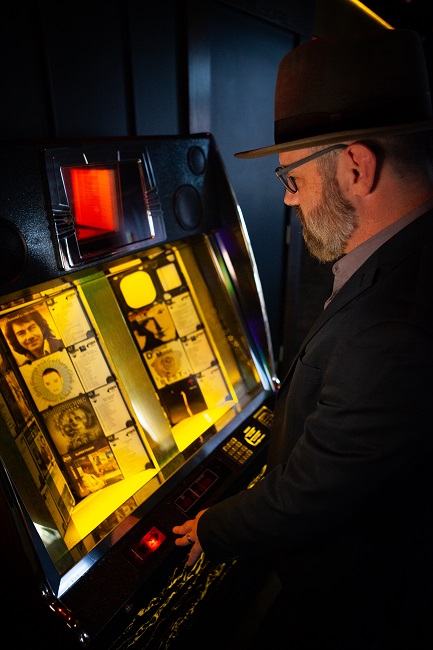
2021 has been such a transformative year for me personally, and like so many other folks like me who live to write and perform the Language, it was a chance to get back on stage and make that Connection with people – on and off stage – that I covet so. I write (or discover) songs primarily, and I know that many of my sistren and brethren have different opinions about playing covers, but I personally love playing songs that mean a lot to me and have influenced my search for the Magic Connection of Music. I try to keep it to one or two cover songs per performance, and I don’t typically play standards or wedding songs like Mustang Sally or Margaritaville (though those are both wonderful songs), but I have no reservations about playing others’ songs in general. Like Dylan said, “I’m a song and dance man.” So, for my High Five, I wanted to highlight a few performances of songs I didn’t write (or discover) that were a part of this special year. These are in chronological order I think.
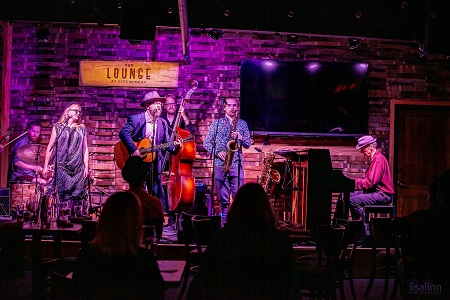
Please Don’t Let Me Be Misunderstood – June 11 – The Lounge at the City Winery, Nashville, Tennessee.
This song, written by Bennie Benjamin, Horace Ott and Sol Marcus for the great Nina Simone, but popularized shortly after by The Animals, is one of the greatest songs ever written – universal lyrical theme, fantastic melodic interplay, and raw, bluesy foundation. I fell in love with Elvis Costello’s version first, before ever hearing Nina Simone’s. My friends and I performed this on the night of the release of my record Kings For Sale. It was a magical night, and this song was one of my favorite moments of the night. The version we ended up with had elements of Nina, Elvis and the Animals, but we really just let the song guide us.
I’m just a soul whose intentions are good.
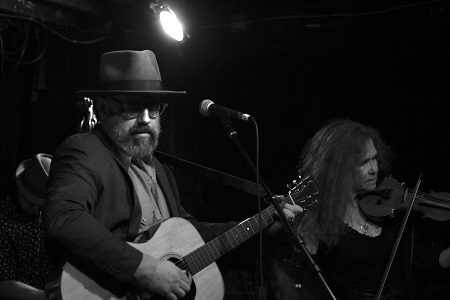
Something’s On Your Mind – July 19 – The Basement, Nashville, Tennessee
Written by Dino Valenti, this beautiful song was originally recorded by one of my favorite vocalists, the great Karen Dalton. It is also a favorite of my friends that I play music with, and one day, while driving my dear friend and fantastic violinist Rebecca Weiner Tompkins to a rehearsal, it was playing in the car, and we decided that we should perform it. My voice doesn’t sound anything like Ms. Dalton’s ghostly wail, so we thought it would make a unique performance. I think it did.
I’ve seen the writing on the wall.
Who cannot maintain will always fall.
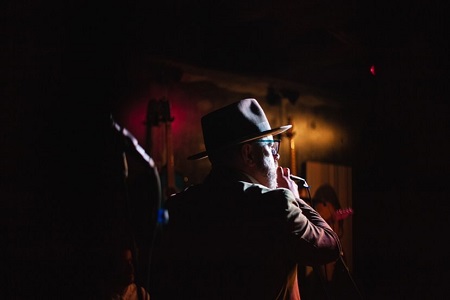
Come On Up to The House – September 22 – Brooklyn Bowl, Nashville
You may be aware of this already – I don’t go out of my way to keep it secret – but I’m a pretty big Tom Waits fan. My voice, strangely enough, was actually shredded up by being in a metal band in my teens before ever hearing Mr. Waits’ music, but I admittedly have since used said voice to cover Mr. Wait’s Music and my pursuit of accuracy has not done my nodules any favors. In any event, this was a really fun time, because it was an invitation from my friends Cordovas, who are at the same time some of the coolest, nicest, most generous and sweet dudes and also one of the best live bands you’ll ever be fortunate enough to see, if and when you do. They asked me to come join them for their AmericanaFest pre-party at the Brooklyn and Joe hand picked this song for me to sing with them. I eagerly and gratefully accepted, and I predictably killed.
Come down off the cross;
we can use the wood.
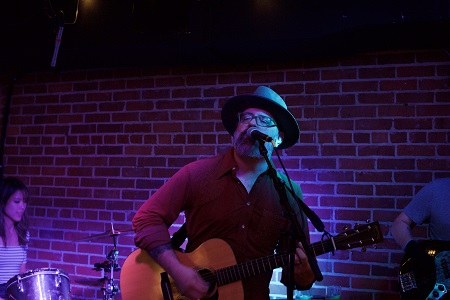
Cure For Pain – 320 Fifth – October 2 – Laurel, Mississippi
Morphine is objectively the greatest band that’s ever been; I actually wrote a paper about it in a philosophy class in undergrad. But the crux of my objective argument comes down to how hard it is to cover a Morphine song well, considering how unique their entire project was. So, when I went on a little tour this fall, I figured I’d give this song a try, because I had great musicians with me that I knew could pull it off. It didn’t sound like Morphine, but I also believe that it’s hard (if not impossible) to play a great song too poorly.
I propose a toast to my self control.
See it crawling helpless on the floor.
Someday, there’ll be a cure for pain.That’s the day I throw my drugs away.
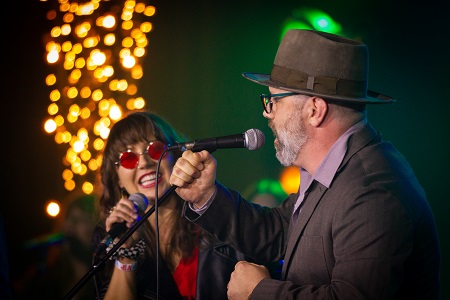
Acadian Driftwood – Basement East – East Nashville, Tennessee
A tradition in Nashville for the last several years has been The Last Waltz tribute show, where the coolest folks in Nashville come together and pay tribute to one of the greatest concerts in music history. This was my first time being a part of it, and it was an honor. The Band was a huge influence on me growing up, and The Last Waltz the movie is one of my favorite films ever. I sang half of Acadian Driftwood, sharing lyrical duties with the fantastic Van Darien, as a part of the great Jon Latham’s band The Lifers. I have no problem admitting that pretending to be a Canadian for one song, while an honorary member of the Lifers, though, is the height of my own pretension, as far as I can remember. Oh well. I had a blast.
This isn’t my turn; this ain’t my season.
Can’t think of one good reason to remain.
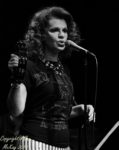 Ronnie Scott’s: it’s not the first venue you associate with performances by American comedy legends, but Sandra Bernhard’s not your average American comedy legend and this was far from the average twenty-first century stand-up gig. The style and structure of the performance harked back to the jazz and cabaret clubs where music and comedy took equal billing across the night and often across individual performances; the band stayed on stage throughout the comedian’s set and often helped out with improvisations. This was how Lenny Bruce delivered his routines.
Ronnie Scott’s: it’s not the first venue you associate with performances by American comedy legends, but Sandra Bernhard’s not your average American comedy legend and this was far from the average twenty-first century stand-up gig. The style and structure of the performance harked back to the jazz and cabaret clubs where music and comedy took equal billing across the night and often across individual performances; the band stayed on stage throughout the comedian’s set and often helped out with improvisations. This was how Lenny Bruce delivered his routines.
The stage line-up for “Sandemonium” is Sandra plus piano, drums and guitar; her act has developed over the decades from purely stand-up to a combination of songs, observations of everyday New York behaviour, politics (almost inevitably), showbiz stories, family stories and some stream of consciousness, Lenny Bruce-style riffing and spritzing. And that’s before you get to the impressions, which are seamlessly stitched in to the tapestry of the performance, not as stand-alone routines but as a way of smoothly moving the narrative along. Here’s an example.
The show opened with the usual introductions, Sandra talking about the greats who performed on the Ronnie Scott’s stage, segued effortlessly into a Nina Simone in Paris story that evoked the subject perfectly. And another; a routine about talking the subway to work on her “Sandyland” radio show led into a powerful interpretation of Tom Waits’ “Downtown Train”. The framework of the set was tightly constructed but gave the impression of total spontaneity; that’s the work of an artist with a genuine gift and a commitment to hard work. The songs, you ask? Well, it was an eclectic mix that included “Little Red Corvette” and a Pachelbel’s Canon mash-up featuring “Let it Be” and “Take on Me” among others.
This particular show was the third over two nights as part of a short visit combining the gigs and a hectic promotional schedule. Even starting at 11:15, Sandra Bernhard gave her adoring audience a full-on, inspirational performance and was willing to spend time after the gig with every fan who wanted an autograph, a selfie or just to say hello. I’m converted.
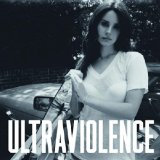 “Born to Die” was an ultimately deceitful album as it was based on the promise that was “Video Games”. Heard only six months before the album debuted and accompanied by the not-quite-equally but still utterly beguiling “Blue Jeans”, these were surely a tantalisingly small taste of what was to come. Thoroughly retrofit, other-worldly and desolate songs with melodies that made you stop what you were doing. “Born to Die”was still a good album but is not the one that many craved or expected and it divided opinion sharply, featuring Del Rey rapping about highly-caffeinated fizzy drinks, repetitive hip hop sounds and samples and a large count of songs that could have just as easily been Britney/Gaga/Rihanna. It was dominated by a production style that can best be described as bombastic and cynical. It also sold in excess of seven million copies and it can safely be presumed that with this came a clout that allowed Del Rey and her choice of producers to finally deliver on that initial promise, as least partially. “Ultraviolence” is the sound of an artist, I suspect, being freed up to fulfil their own creative desires; that sound is both very different from what came before and also very much the same.
“Born to Die” was an ultimately deceitful album as it was based on the promise that was “Video Games”. Heard only six months before the album debuted and accompanied by the not-quite-equally but still utterly beguiling “Blue Jeans”, these were surely a tantalisingly small taste of what was to come. Thoroughly retrofit, other-worldly and desolate songs with melodies that made you stop what you were doing. “Born to Die”was still a good album but is not the one that many craved or expected and it divided opinion sharply, featuring Del Rey rapping about highly-caffeinated fizzy drinks, repetitive hip hop sounds and samples and a large count of songs that could have just as easily been Britney/Gaga/Rihanna. It was dominated by a production style that can best be described as bombastic and cynical. It also sold in excess of seven million copies and it can safely be presumed that with this came a clout that allowed Del Rey and her choice of producers to finally deliver on that initial promise, as least partially. “Ultraviolence” is the sound of an artist, I suspect, being freed up to fulfil their own creative desires; that sound is both very different from what came before and also very much the same.
“Cruel World” opens the album in a grandiose and gloating fashion- at nearly 7 minutes long it declares its own riskiness loudly and with an obvious pride. Dan Auerbach of The Black Keys has, along with Del Rey, decided the sonic template; he produced the majority of the album, and it is represented in full here and is adhered to pretty much throughout. Out go the r’n’b beats, trip-hop, the clattering metallic percussion and the sugared spoken-song rhymes to be replaced by live drums, guitars with serious intent and a dazed and strung out Del Rey yowling ‘you’re fucking crazy – you’re crazy for me’. Leading to her best melody second only to “Video Games”, “Ultraviolence” is a song that could have come at any point during her discography and would be considered one that encapsulates her ability to pull you close and watch the collision. Its controversy is ridiculous and highly theatrical but the beauty is undeniable. “Shades of Cool” is, again, a gorgeous swooping waltz with a falsetto chorus and a line in haughty cattiness that confirms Del Rey’s refusal to play the feminist role in a way that has and will alienate many. The guitars deliriously shred the languid mood to pieces in the final minutes of the song and it’s her best attempt at a Bond theme thus far.
The initially deceptively empty and messy sounding “West Coast” is in many ways “Ultraviolence”’s biggest triumph. As the first piece of music heard from the album it threw many with its refusal to stick to a steady tempo – slowing down dramatically in the chorus only to speed up again- and vocals that during the verses were tight and gulped. It wasn’t the Lana Del Rey we were used to hearing and quite possibly one we didn’t like but repeated listens reveal a thrillingly compact and almost perversely catchy pop song that confirmed that this time around, she wasn’t interested in an easy win. “Brooklyn Baby” is the album’s only concession to light. A track that twirls and revels in a 1960’s, a near Saint Etienne folk-pop confection that has a depth and warmth that isn’t evident at first listen – another slow burner in an album that has many. “Brooklyn Baby” does however highlight a sticking point with Del Rey and that is not her ability as a performer, she sounds far more confident and poised on this album than the last, but her abilities as a song writer. It’s not clear whether the song is bemoaning current-day hipsters or an actual celebration of the beat movement of that time, either way the writing is hackneyed and clunky to the point where it seems to be intentional but then again, I suspect not.
Daddies, diamonds, death, drugs (lots and lots of drugs) and little red dresses have all been referred to by the time we reach the album’s half way point but because of the exceptionally strong songs and performances they don’t grate in the way that they could have done. The Lana Del Rey key-words remain, her stock phrases that have been there from the beginning but still, somehow, have allowed her to create new music without it becoming ludicrous. Because of the baggy and lifeless combination of “Sad Girl” and “Pretty When You Cry” ( those titles!) being stuck together in the middle of the album though, this aspect of the Lana Del Rey persona – wronged woman, sad woman, loves her men bad woman – ultimately and inevitably becomes boring. The venomous “Fucked my Way Up to the Top” and almost brilliant “Money Power Glory” which is let down only by a repetitive and not fully realised chorus, restores some of the energy but it never quite reaches the highs of its first half.
“Ultraviolence” has just about secured Lana Del Rey’s status as An Artist to be Taken Seriously, irritating to many maybe but difficult to deny or avoid given the force at which her vision here takes its form. It’s not an easy album on any level – sonically, lyrically or vocally and the playfulness that littered “Born to Die” has all but evaporated and is replaced by a looser, insidious malaise and increasing desperation which only very occasionally is flushed out by a crystalline piano ballad ( the very lovely “Old Money”) or a laughed-out-loud line. It’s hard to say whether the closing track, a cover version of Nina Simone’s “The Other Woman”, is a ridiculously on-the-nose piss-take on the Del Rey construction or the perfect finale for a pop star whose talent has been to locate something that has been dormant for some time, an ability to transcend cultural dictates and become an individual. Either way it doesn’t really matter, there is music here to daydream deeply to and when done, return to life which will never be as dangerous, sick and romantic as the world that Del Rey has created here. That is indeed, quite a talent.
For the second consecutive year, Billie Ray Martin makes a contribution to our High Fives feature. We’ve been looking forward to this one because the 2012 selection featured some great songs and artists which were new to us at MusicRiot. We weren’t disappointed. Please take a bit of time to check out the links; it’s worth it.
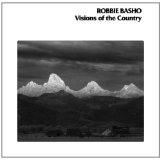 Robbie Basho – “Blue Crystal Fire”
Robbie Basho – “Blue Crystal Fire”
Robbie Basho’s tenth album “Visions of the Country” (originally released in 1978) was re-released this year after being unavailable for over thirty years. Although he’s remembered for his innovative guitar stylings and tunings and attempts to integrate western and oriental music, the standout feature on this song is the powerful counter-tenor vocal with incredible vibrato. He died at the age of 45 in 1986.
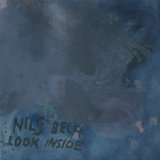 Nils Bech – “Breaking Patterns Part 2 (The Breakup)”
Nils Bech – “Breaking Patterns Part 2 (The Breakup)”
The first of two selections from the Norwegian performance artist Nils Bech’s 2013 “Look Inside” album, this is an intimate arrangement with a minimalist acoustic piano and beautiful sautillé strings under a close-miked vocal which deals with a relationship falling apart. The final third of the song mirrors the break-up with a descent into atonality from the string section.
 Xiu Xiu – “Don’t Smoke In Bed”
Xiu Xiu – “Don’t Smoke In Bed”
Xiu Xiu is an American experimental indie band which has existed in various guises since 2002. This song is from the recently- released album of Nina Simone covers, “Nina”. The arrangement is almost completely percussion-free, with rhythm supplied by a horn section and one guitar and shifts from fairly traditional horn arrangements (with the guitar taking one of the horn lines) to free-form jazz. Singer Jamie Stewart delivers a vocal which is just this side of a deranged, creating a version which, incredibly, is more over-wrought than the original.
 Nils Bech – “A Sudden Sickness”
Nils Bech – “A Sudden Sickness”
This follows directly on from “Breaking Patterns…” on the “Look Inside” album and is the next part of the narrative sequence. The song opens with acoustic piano backing before settling into an electronic percussion and keyboard arrangement underpinning the lyrical theme of the inevitable jealousy towards an ex-partner who has moved on; it actually has a feel of the Abba song “One of Us”. Both are standout songs, but you really should listen to the entire album.
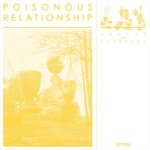 Poisonous Relationship – “Men’s Feelings”
Poisonous Relationship – “Men’s Feelings”
This is a contemporary track which takes its influences from the early ‘90s when house started to incorporate breakbeats into the 303 and 808 backing tracks. It has a feel of Jamie Principle and, towards the end, a hint of the jazz-funk of NuYorican Soul. It’s the lead track from the androgynous Sheffield artist Jamie Crewe’s “Garden of Problems” EP and it’s hypnotic and gorgeous.
 When I’m reviewing music I always focus primarily on the quality of the vocal, the quality of the playing and the quality of the lyrics. With blues albums I expect the playing to be good and if you get a great vocal performance as well, that’s a bonus. Lyrically, it’s easy to fall into old blues clichés and I guess it’s understandable in a musical form that places such an emphasis on performance and improvisation. On this album, Aynsley Lister nails the playing, the vocals and the lyrical themes; that’s why “Home” (his tenth album) is a great modern blues album. I mean where else are you going to hear a song inspired by “Life on Mars”? And I mean Gene Hunt, not David Bowie.
When I’m reviewing music I always focus primarily on the quality of the vocal, the quality of the playing and the quality of the lyrics. With blues albums I expect the playing to be good and if you get a great vocal performance as well, that’s a bonus. Lyrically, it’s easy to fall into old blues clichés and I guess it’s understandable in a musical form that places such an emphasis on performance and improvisation. On this album, Aynsley Lister nails the playing, the vocals and the lyrical themes; that’s why “Home” (his tenth album) is a great modern blues album. I mean where else are you going to hear a song inspired by “Life on Mars”? And I mean Gene Hunt, not David Bowie.
Aynsley has responded to the implosion of the music business (referenced in the album’s second song “Broke”) in the same way as many other performers; he decided to bypass it completely and record and release material on his own label (Straight Talkin’ Records). He’s an accomplished songwriter and a inspired lyricist, tackling some of the standard rock themes on “Home” and “Insatiable” with a creative, poetic twist and moving into less conventional subjects with “Broke”, “Hyde 2612” (the Gene Hunt song) and “Free”, the very moving tribute to his friend Rod Thomson. He covers a wide range of blues styles, but the lyrical themes on “Home” are pushing at the boundaries of the blues/rock genre and that has to be a good thing if the genre aims to survive the music industry meltdown.
The album features a couple of covers, placed together in the running order. The first, the James Morrison song “You Make it Real”, shows that Aynsley isn’t afraid to put his own stamp on a contemporary song while the Leslie Bricusse/Anthony Newley standard “Feeling Good” is pitched somewhere between the Nina Simone and Muse versions with robust guitar work and a powerful vocal.
And that brings me quite neatly to Aynsley Lister’s vocals. His reputation is built around his playing (which is faultless), but he has a fabulous voice which isn’t always in the characteristic blues style. His vocal style is very radio-friendly with a hint of plaintive melancholy which nudges into the territory of Rob Thomas (former Matchbox Twenty frontman) at times and maybe (for those of you with very long memories) he has a hint of Iain Matthews.
So we’ve got some sensitive and quite radio-friendly songs but if you’re into the heads-down, no nonsense mindless boogie there’s a bit of that as well with the barrel-house boogie-woogie of “Sugar” and the album closes with the jazzy “Straight Talkin’ Woman” where eight bars of stuttering, staccato guitar develops into a powerful flowing solo.
The band is superb throughout. Andre Bassing (keyboards), Steve Amadeo (bass) and Wayne Proctor (drums) are perfectly at ease with the album’s varying musical styles and provide a rock solid foundation for Aynsley’s guitar and vocals. I’ve reviewed a few good new British blues/rock albums over the last few months, but “Home” stands above the rest because of its variety, songwriting quality and willingness to move the blues forward in the twenty-first century. This is classy, blues writing, playing and singing of the highest order.
Out now on Straight Talkin’ Records (STR 2612).
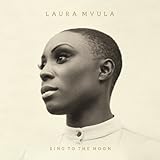 Laura Mvula is a British soul singer and this her debut album; let’s leave it at that shall we? The accompanying brouhaha and hyperbole should be ignored and put aside with immediate effect and instead let’s concentrate on what’s actually on offer here, what we can listen to and is it in fact any good?
Laura Mvula is a British soul singer and this her debut album; let’s leave it at that shall we? The accompanying brouhaha and hyperbole should be ignored and put aside with immediate effect and instead let’s concentrate on what’s actually on offer here, what we can listen to and is it in fact any good?
“Like The Morning Dew” opens “Sing To The Moon” with a vocal that sounds like a hybrid of many singers, British predominantly, that sound a little bit like Amy Winehouse, maybe some Emile Sande thrown in for good measure and then someone old school and monumental like Nina Simone or Billie Holliday. Laura Mvula has an arresting voice then, albeit one you think you may have heard before. There are also choirs, luscious harps, big orchestras, military drums, trip hop beats occasionally and things can become very quiet before they go very loud; it’s what you might call ‘organic’. You might think of the The Carpenters or indeed The Beach Boys in respect to the multiple harmonies. It’s nice and it’s pretty more than anything, which may be a surprise given this seemingly crowded sonic template, and things continue in this vein for the first four songs, the most pop song on here, “Green Garden”, being the highlight.
Just when I begin to here to fear that maybe Mvula was going to suffer from Florence syndrome where every track followed the same structure, the same huge chorus, sonic crashes but without too much of an actual song to grab onto, my ears stood to rapid attention with the arrival of the fifth song, ”Is There Anybody Out There?” Airy and menacing and haunting, it’s a fantastic song and an incredibly detailed and warm arrangement with Laura and a double bass sounding lonely but in complete command of the deserted universe she appears to be trapped in. If I had to make a comparison it would be to Bjork and I wouldn’t bandy that around willy-nilly, somewhere between the “Homogenic” and “Vespertine” albums when her classical and pop influences merged beautifully and the avant garde just began leaking in and hadn’t yet taken over.
From this point on things begin to take flight and on occasion, soar.’”Father, Father” diverts somewhat from the musical richness that prevails here being predominately piano with Mvula’s strident, defensive vocals sounding like a hymn, a prayer to an absent parent. It sounds like a traditional song but, due mainly to the odd phrasing of her performance particularly in the repetition of the last minutes but modern too. “That’s Alright” is self-possessed and uplifting, a non-preachy ‘fuck you’ to race and body image stereotypes and expectations and is another great song. Mvula writes or co-writes every track here. “I Don’t Know What The Weather Will Be” and the title track “Sing to the Moon” are mid tempo and gorgeously spacious and “Flying Without You” is a show-stopping, whooping mix of girl group pop and musical theatre; think “South Pacific” meets the Sugababes but played out in a church, the on-going lyrical celebration of individuality and freedom continues to be the predominant theme of this album.
Like Lianne La Haines, Adele, Florence and, er, Ellie Goulding before her there are many accolades being thrown at Laura Mvula at the moment and we should all do our best to ignore all of this, they just cloud the issue. She isn’t like any of these artists and considering she only has less than 15 songs to her name so far we should wait and see what happens. Mvula seems open to many things and is almost certainly in love with making music and it can take some time before a performer finally becomes the artist that truly fits them. Until then this is an invigorating, beautiful piece of work and I recommend you listen to it.


